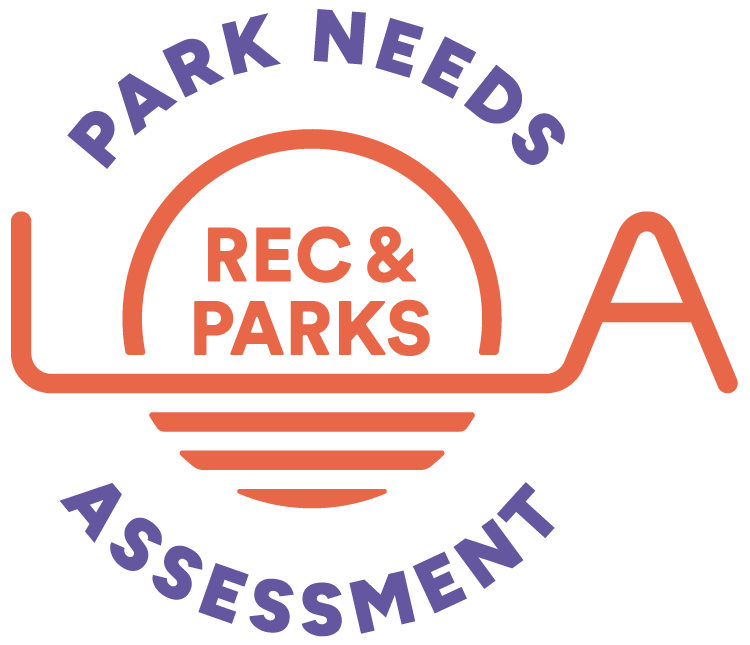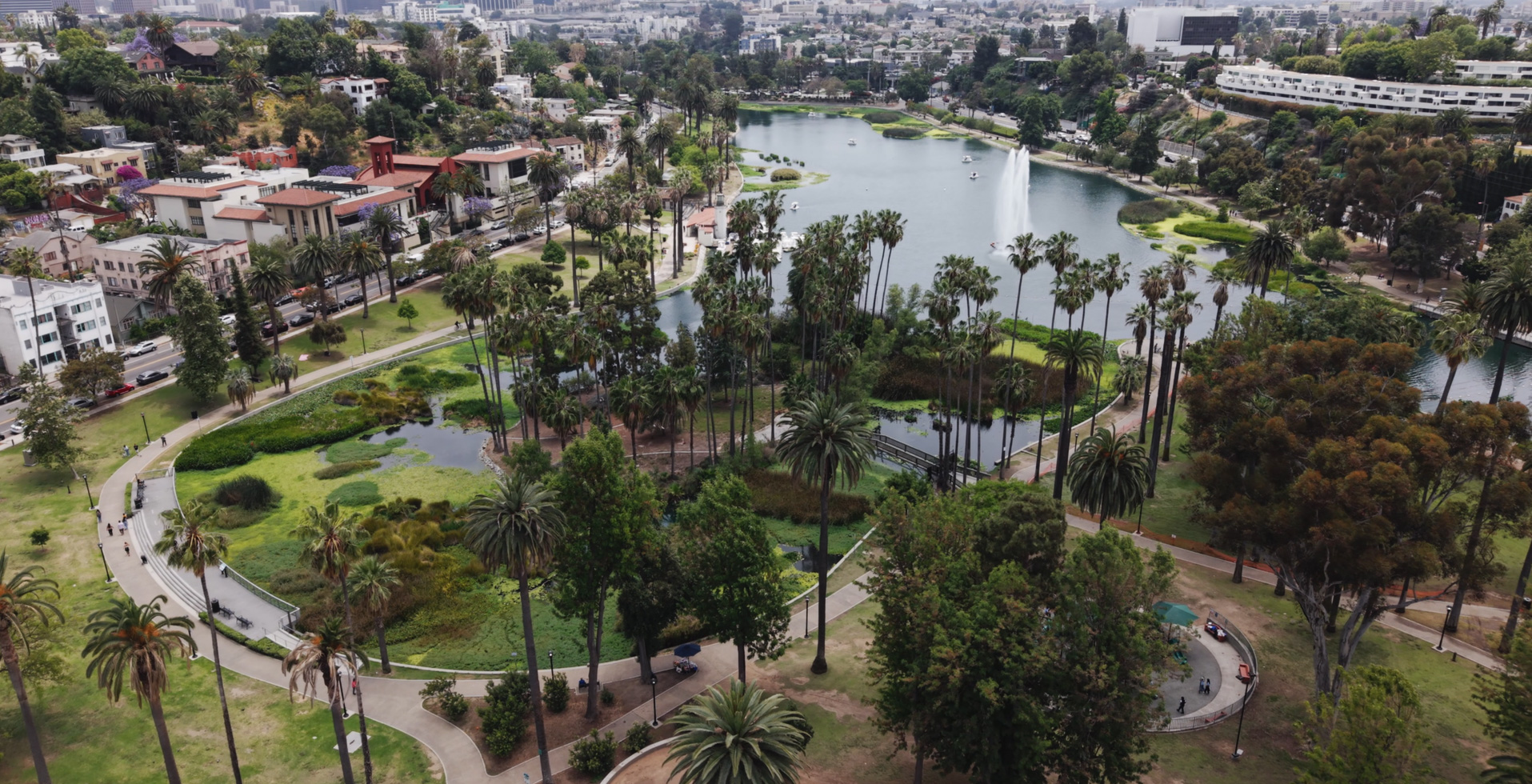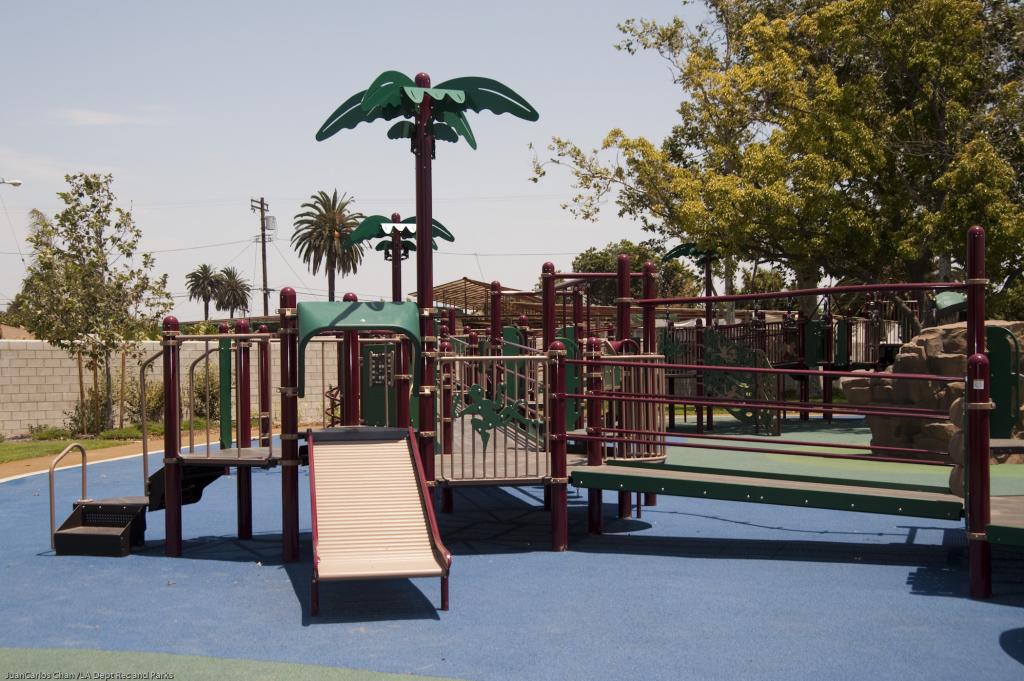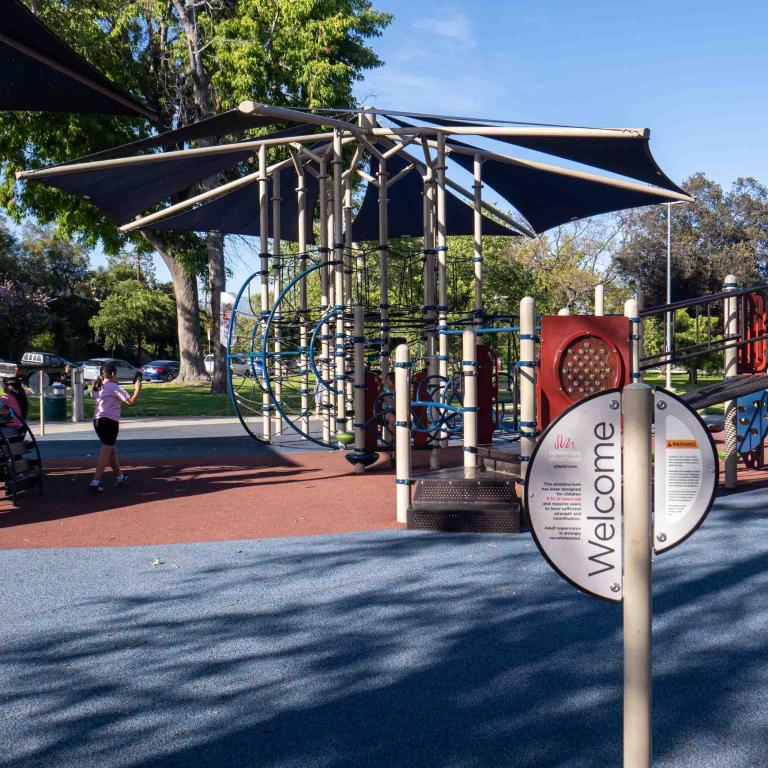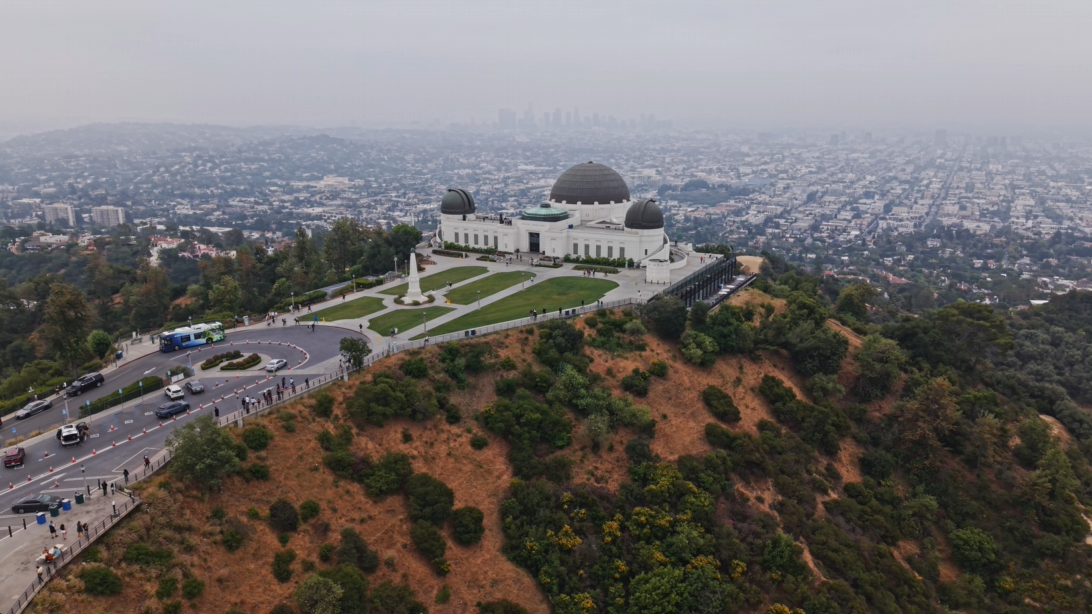From small parks tucked into neighborhood blocks to expansive open spaces, each type of park plays a distinct role in serving the diverse needs of Los Angeles’ residents and communities. As the city grows and evolves, understanding the purpose and function of each type of park becomes increasingly important to ensure equitable access, appropriate amenities, and efficient management. The new park classification system in the PNA seeks to clarify how existing parks function and provides guidelines about future park and recreation facility typologies that may be necessary to meet the needs of current and future residents.
Existing Classifications
The City currently divides all parks in Los Angeles into one of three park classifications.
Neighborhood Parks
Neighborhood parks provide space and facilities for outdoor and indoor recreational activities. They are intended to serve residents of all ages in the immediate neighborhood and are generally smaller, ranging 1–10 acres in size.
Community Parks
Community parks are designed to serve residents of all ages in several surrounding neighborhoods. Community park facilities serve a much wider interest range than those of neighborhood parks and are larger in size, ranging 15–20 acres.
Regional Parks
Regional parks provide facilities typically found in neighborhood and community parks as well as offering specialized recreation facilities such as lakes, golf courses, wilderness areas, and museums. Regional parks serve residents living throughout the entire city of Los Angeles and are generally over 50 acres in size.
With so few classifications, the current system includes vastly different parks in each category. For example, neighborhood parks include both the 105th St Pocket Park, which is under a quarter of an acre, and Bee Canyon Park, a park over 20 acres. The regional park classification includes Little Landers Park (1.1 acres), Stoney Point Park (29 acres), and Venice Beach (161 acres)—three parks with very different sizes, contexts, and uses. The proposed classifications more accurately reflect the broad range of sizes, amenities, design, usage, and programming that exist in LA’s recreation and parks facilities today. Additionally, as parts of Los Angeles continue to see increased density, new types of parks and recreation facilities will be needed. The expanded classification system in this plan is meant to help set mutual expectations among the City, residents, partner organizations, and developers about how different parks and recreation facilities look and function.
Proposed Classifications
The new park and recreation facility classification system in this plan expands the existing classification system both to clarify how existing parks and recreation facilities function and to provide guidelines about future park and recreation facility typologies that Los Angeles expects to build in the future to meet the needs of current and future residents.
For each park and recreation facility classification, the PNA includes a general description of the classification’s:
- typical size range;
- typical length of visit;
- access provisions;
- list of appropriate amenities;
- applicable site planning guidelines.
The list of amenities is not meant to be prescriptive or exhaustive. The appropriate amenities for any individual park or recreation facility should be determined through a planning process that involves the community it is meant to serve. All parks and recreation facilities should be designed to serve all age segments and a diversity of users.
